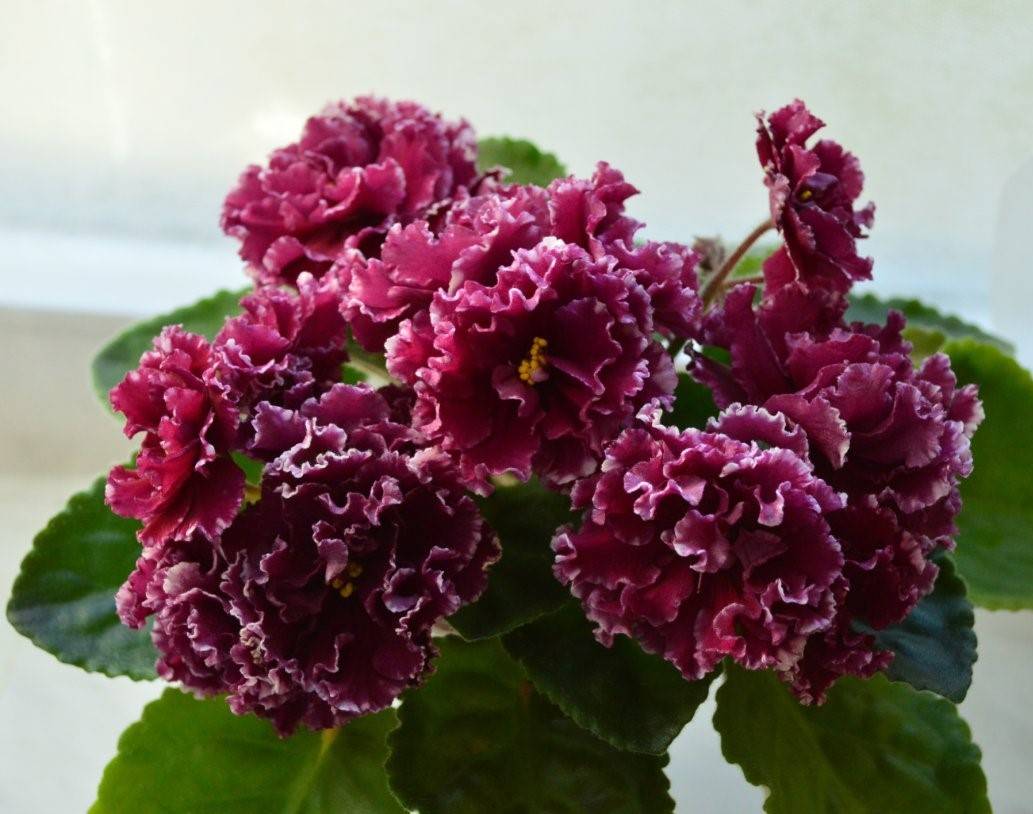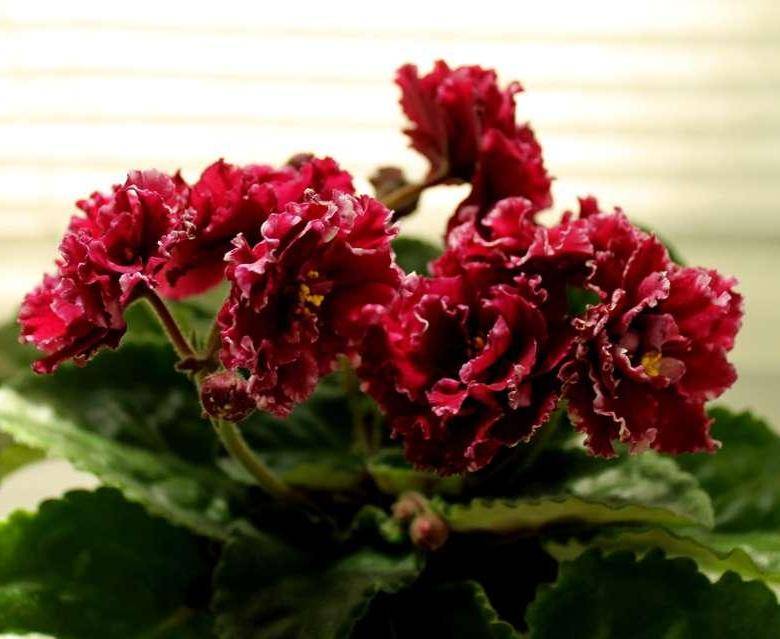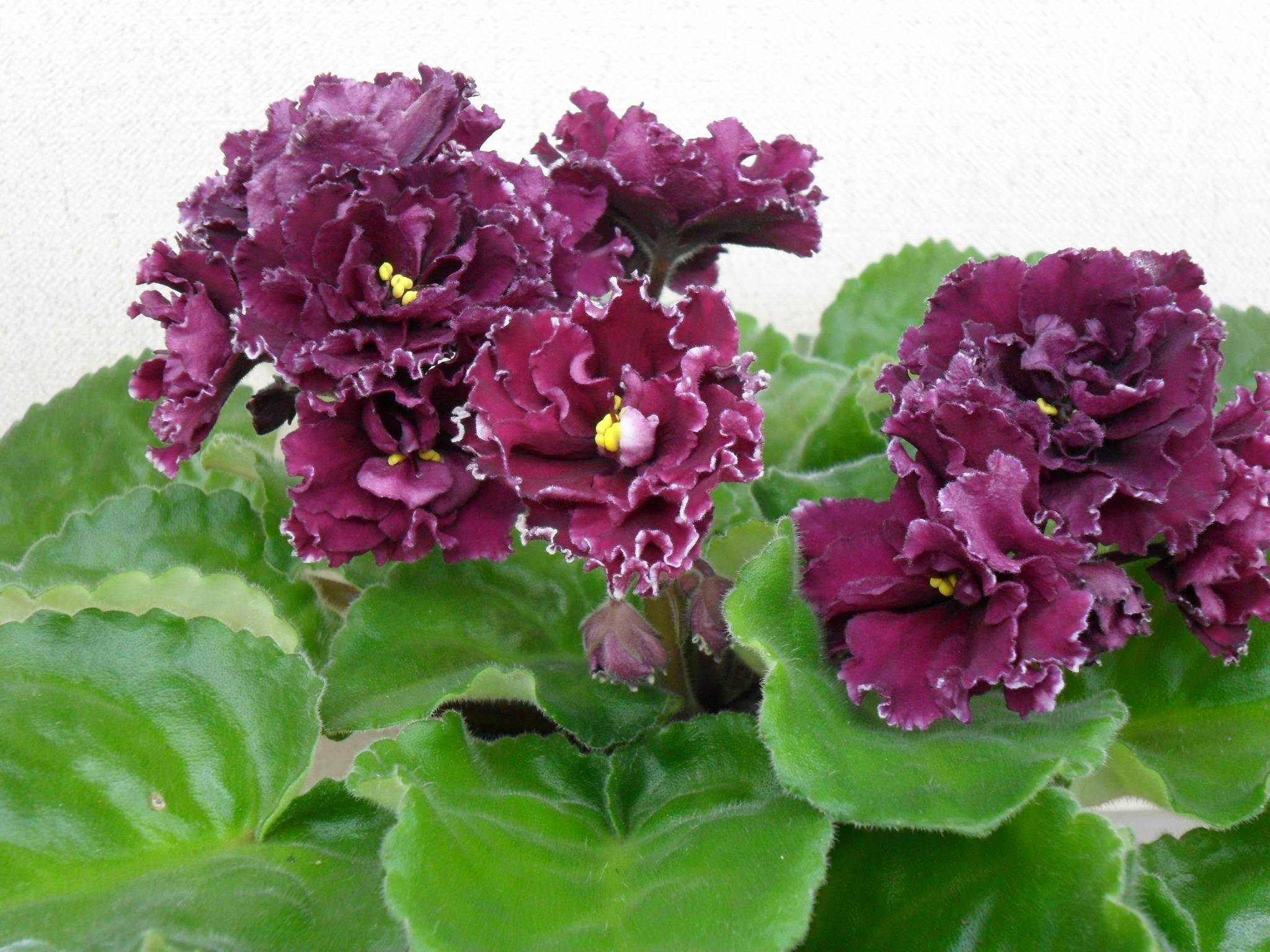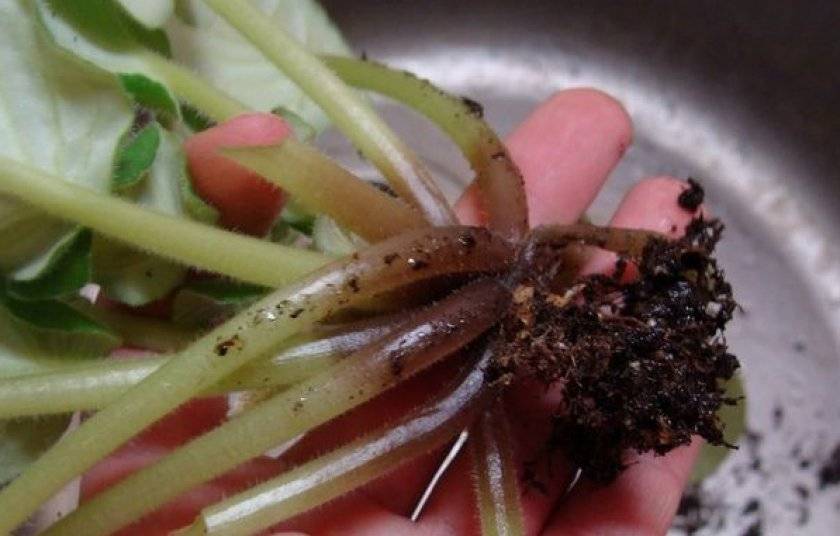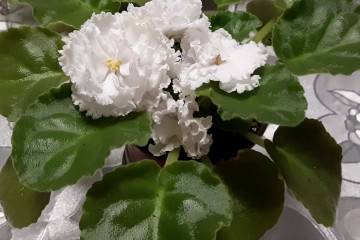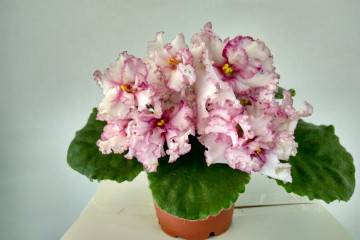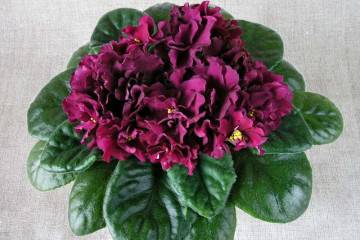Violet Magenta - description and characteristics of the variety
Content:
Indoor violets come in many varieties and varieties. Magenta is an unusual flower with a beautiful and lush bouquet. The plant is popular because it does not need any special care. The violet pot will be a great addition to any interior.
What a violet Magenta looks like
Le Cuff is a bush up to 15 cm in diameter with large bright flowers and leaves. The plant blooms for a long time, which attracts even more attention. To determine the choice of a flower, you must carefully study the description of the species.
Plant characteristics
This is a violet with large flowers of a rich and bright red-burgundy color. The buds are located on a long and thick peduncle, which makes the flowers seem to lie on the leaves. A thin white border runs along the edges of the petals. Violet leaves are large and on long petioles. On the back there is a silvery and matte shade that turns into pink over time.
Briefly about the history of appearance
This variety was bred by the Ukrainian breeder E. Lebetskaya. This is the English name of the flower, which appeared in honor of the battle near Magente in 1859. All varieties that Lebetskaya bred are produced with the prefix LE.
Features of caring for a violet LE Magenta at home
Violets are unpretentious and have strong immunity. However, there are a number of nuances that can harm the plant if not properly cared for.
Temperature
Le Magenta is a thermophilic plant that thrives at 18-25 ° C.
At a low temperature, leaf rot is observed in the plant, and at an increased temperature, parts of the violet begin to dry.
Lighting
Violet Magenta, like other varieties, does not tolerate direct sunlight, starting in mid-May. Such lighting can harm the plant and completely burn the leaves.
It is best to place the plant on the eastern sides of the house. In such a place, the violet is least susceptible to the negative effects of sunlight. If the plant is in the south, then a blanket of white paper must be hung between the bush and the window.
Watering
Watering must be organized as the soil in the pot dries. Clean water at room temperature will do. In winter, it is recommended to warm up the watering liquid a little. When using tap water, it is preliminarily defended within a day. It is not desirable for the water to fall on the leaves and flowers.
It is best to water by immersing the pot in a bowl of water. Thus, the soil is completely saturated, and excess water does not collect at the top and does not flow down the pot.
Spraying
Spraying violets is not carried out. Experts say that such a procedure can only harm the flower. The only case when spraying can be used is when parasites appear on the plant.
Humidity
The optimum humidity level for Saintpaulia Magenta is 50-60%.If the room is too dry in winter due to heating, then wet towels are hung on the radiator. The water evaporates and the humidity of the air rises.
Priming
You can purchase ready-made soil at a flower shop or make the mixture yourself. To get high-quality soil at home, you need to take deciduous soil, peat, humus and sphagnum moss. The finished soil should be loose and nutritious.
Top dressing
Top dressing LE Cuff violets are carried out several times a month throughout the year, except for the dormant period (November-February). Fertilizers must be added to moist soil. Mineral complexes are suitable as dressings.
Product examples:
- "Stimovit";
- Baikal-M1;
- "Master 20.20.20".
When and how it blooms
Violet Cuff begins to bloom in March. First, the plant throws out long pedicels, at the ends of which there are from 3 to 5 baskets. Semi-double and double flowers of a deep red color appear from them. Their diameter is 5 cm. There is a white edging along the edge of the petal.
How Saintpaulia Magenta reproduces
Violet LE Magenta can propagate by seed or vegetatively. At home, the second method is often used. Vegetative propagation involves dividing a bush or cutting a leaf. The division of the bush is used at the moment when the plant stops blooming. Technology description:
- The bush is taken out of the pot and the future baby is cut off with a sharp knife.
- The seedling is transferred to a small container and covered with a jar to create a greenhouse environment.
- Every day it is necessary to ventilate and water the violet with a small amount of water.
The original bush should be freed from dry parts and transplanted into a new pot. Requirements for the mother bush: the leaf should be young from the middle or upper row, there should be no spots on the surface.
The stalk is cut at an angle of 45 °, sent to a container with boiled water and activated carbon. When the roots appear about 1.5 cm long, the twig can be transplanted into the ground. If necessary, put a support for the leaves. In the future, they take care of them like an adult plant.
Transplant after purchase and during reproduction
After the purchase, experts recommend replanting the violet as early as possible. For this, soil and a suitable pot are selected.
In order for the violet to take root, you must adhere to the following rules:
- a leaf or a baby is planted in the center of the pot (up to 6 cm in diameter);
- for watering, 1 tbsp is enough. spoons of warm water.
In the future, it is necessary to regularly ventilate and make sure that the soil does not dry out.
Possible growing problems
Due to insufficient lighting or lack of minerals, the leaves may turn yellow or become stained. Also, problems with foliage can be due to parasites or disease.
Pests
Saintpaulia Magenta in the process of growth can be attacked by the following pests:
- aphid;
- nematode;
- thrips;
- whitefly.
Diseases
Improper care provokes the appearance of such diseases in violets:
- decay of leaves and roots;
- the formation of gray rot;
- fusarium;
- powdery mildew;
- late blight.
Signs of improper care include any deviation in the development of the plant. It is necessary to periodically inspect the flower in order to detect the presence of a problem in time and correct the situation. In some cases, it is enough just to adjust the lighting or watering. If we are talking about parasites, then mechanical treatment with insecticidal agents is necessary. Otherwise, everything is extremely simple, so you can safely buy this variety of violets.
